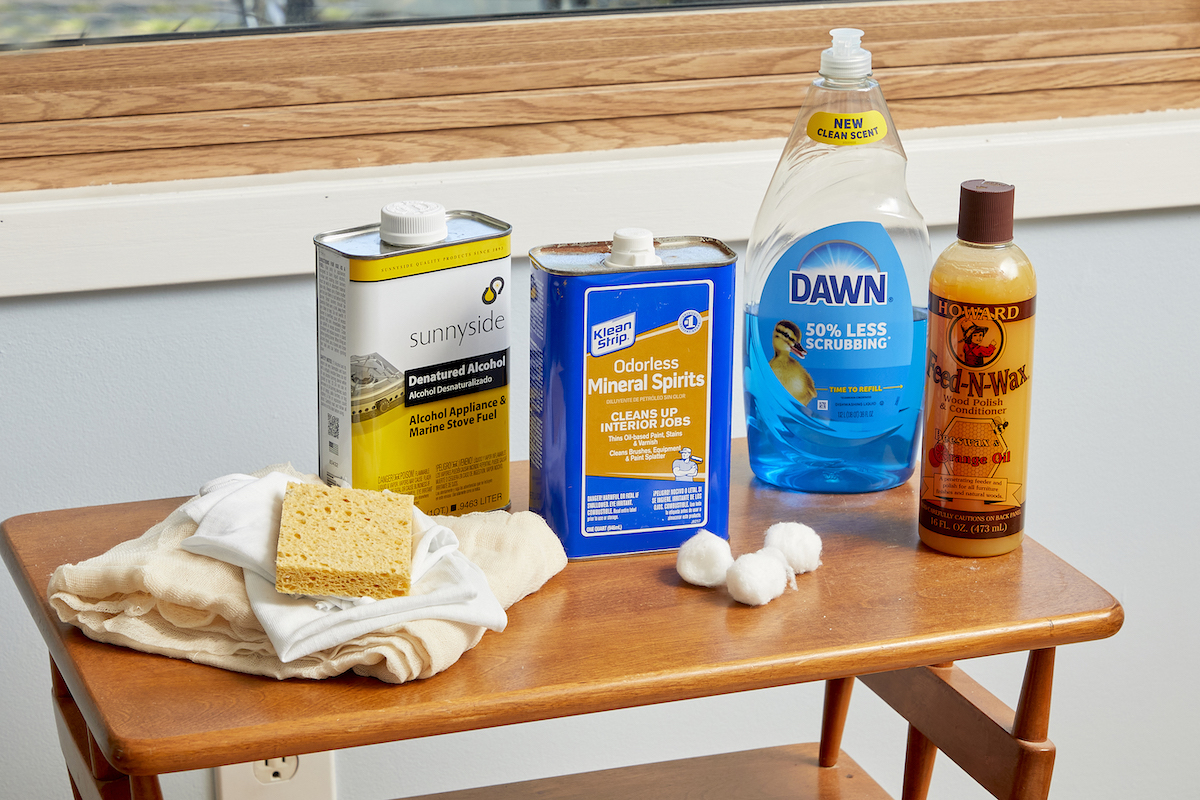We may earn revenue from the products available on this page and participate in affiliate programs. Learn More ›
Homeowners have long relished the beauty, versatility, and toughness of wood furniture—and above all, they’ve appreciated its low maintenance. Like the ideal houseplant for brown thumbs, wood furniture survives on its own, requiring little intervention. Every now and again, though, whether due to an accident or normal wear and tear, you’ll need to know how to clean wood furniture to renew its appearance and ensure its longevity. When that inevitable day comes, follow these steps to restore a wood finish to impeccable condition without inadvertently causing damage.
Tools & Materials
Bobvila.com may earn a commission from purchases made through these links.
If you are certain of your wood furniture finish—paint, stain, or some other treatment—then use a cleaning method appropriate for that specific wood finish. Otherwise, it’s best to clean the furniture in stages, starting with a mild cleanser that poses no risk to the integrity of the finish, then graduating to a stronger solution only if the gentler one fails. Proceeding in this way means that you can safely clean wood furniture without knowing precisely what you’re dealing with.
Step 1: Clean the wood piece with dish soap.
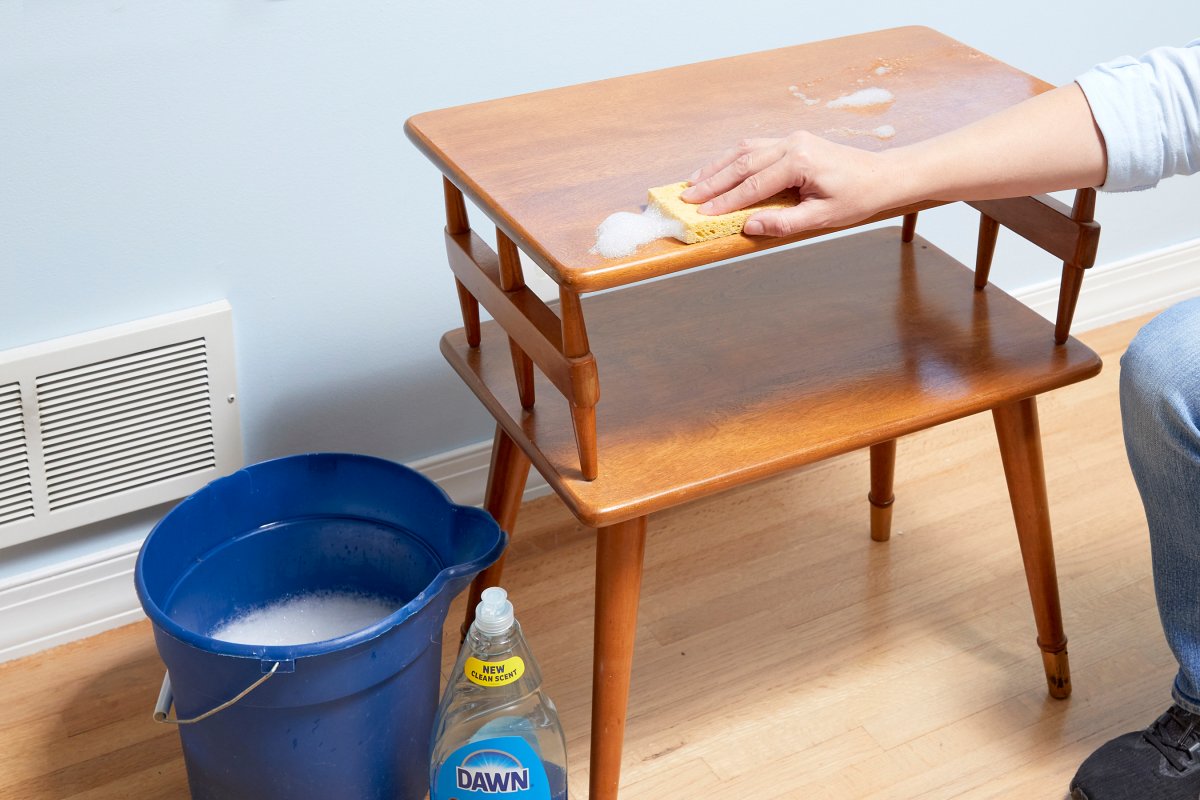
Start out with perhaps the humblest of household cleaners: liquid dish soap.
- Add a drop of liquid dish soap to a water-moistened cotton ball.
- Next, wipe the cotton ball on an inconspicuous part of the furniture, such as the inside of a chair leg.
If the detergent mars the finish in your test area, then continue without the dish soap. If the test area shows no evidence of damage, it’s safe to proceed. Mix water and dish soap in a bucket and use this solution to sponge down the entire piece of furniture. Do not soak the wood; this is a common mistake. Instead, brush the sponge lightly over the surface and don’t let the liquid linger for long. Dry thoroughly.
Step 2: Use mineral spirits to remove more grime from the wood.
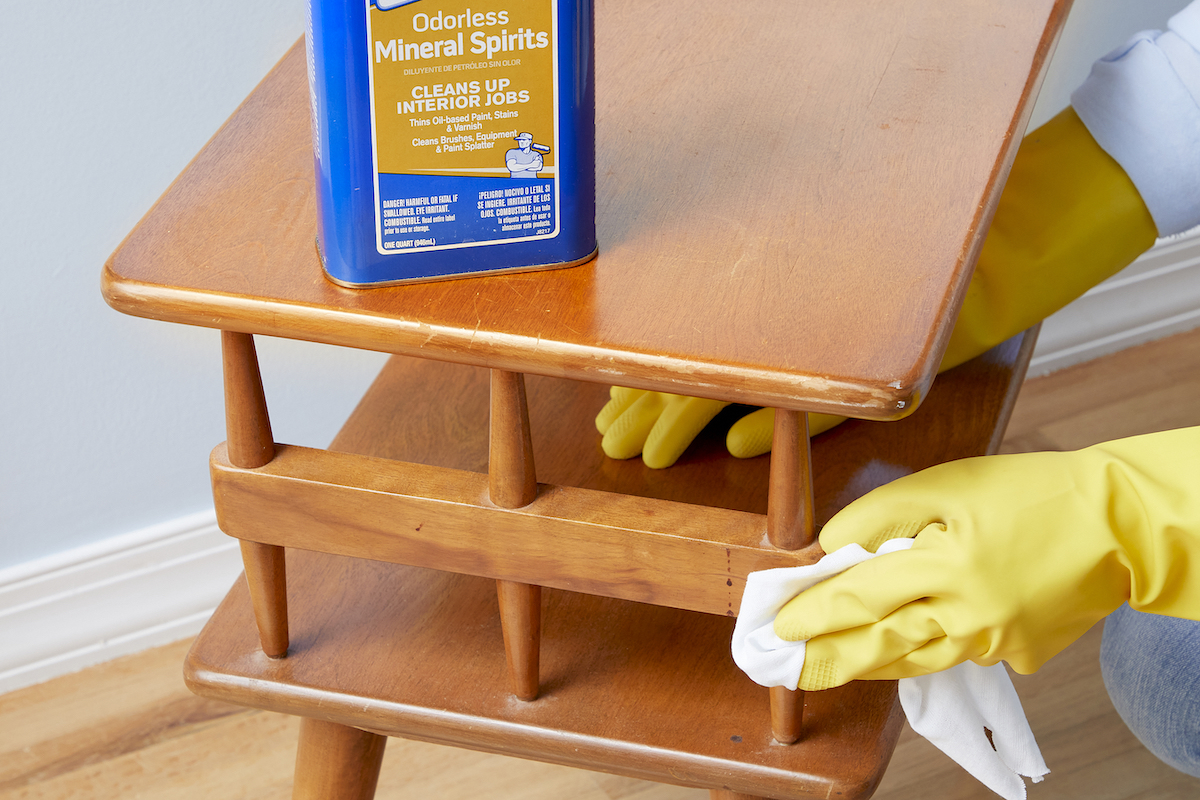
If you want to see if you can get your furniture a little cleaner, the next thing to try is mineral spirits. One-quart containers of mineral spirits typically sell for $15 or $20. Be sure to follow the printed instructions for safe use. For one thing, working in a well-ventilated area is a must.
Though mineral spirits should be harmless to wood finishes, you should still test the treatment on an inconspicuous part of the furniture to make absolutely sure. If you see no discoloration, proceed to wipe the furniture down with a the a clean cloth soaked in, but not dripping with, mineral spirits. Finish by wiping away any residual cleaner with a water-moistened cloth, inspecting the wood for blemishes as you go.
In many cases, mineral spirits can remove years of grime.
Step 3: Consider refinishing the wood.
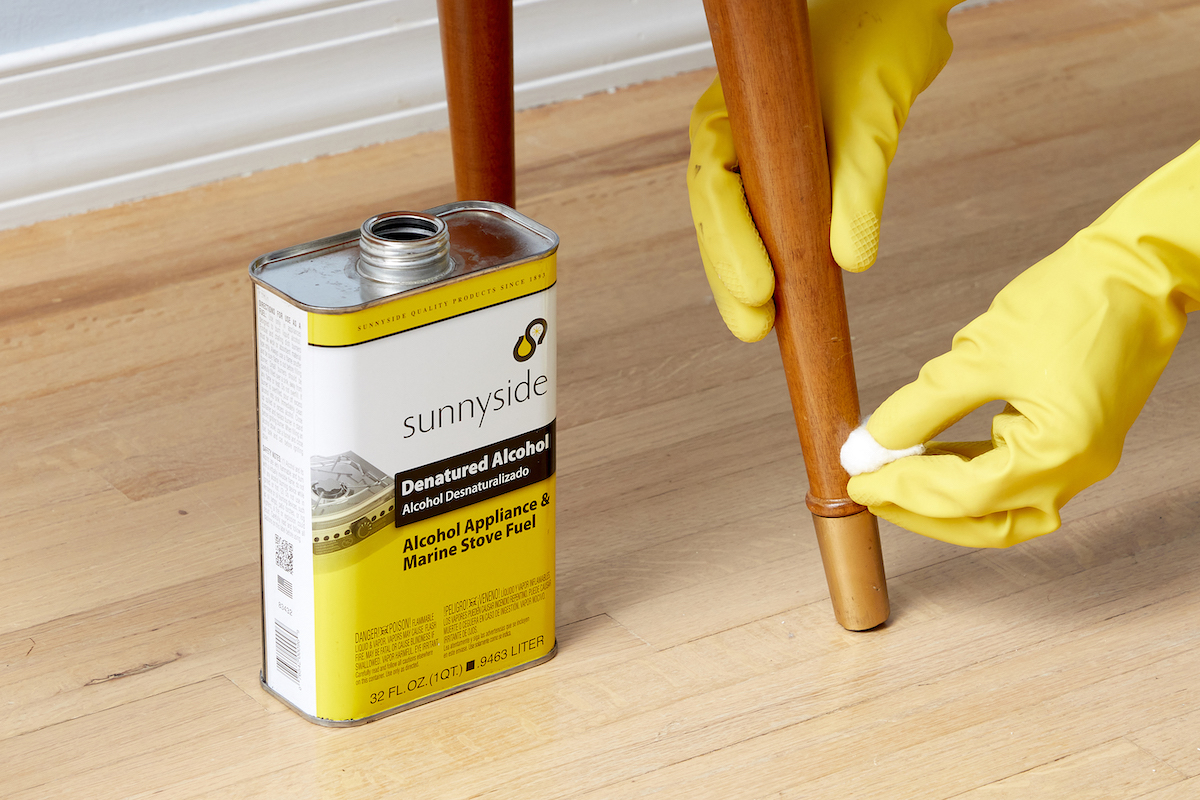
If the finish reacted negatively when you tested the mineral spirits on your furniture, don’t push your luck—move on. You’ll likely need to refinish the wood furniture piece to truly restore it.
Note: To determine the type of finish that is on the wood now, dab some denatured alcohol onto a cotton swab and test it in a small, inconspicuous area. If the finish dissolves, the finish is probably shellac. If the finish stands up to the alcohol, it’s likely oil, lacquer, varnish, or polyurethane.
Step 4: Protect the wood against future damage.
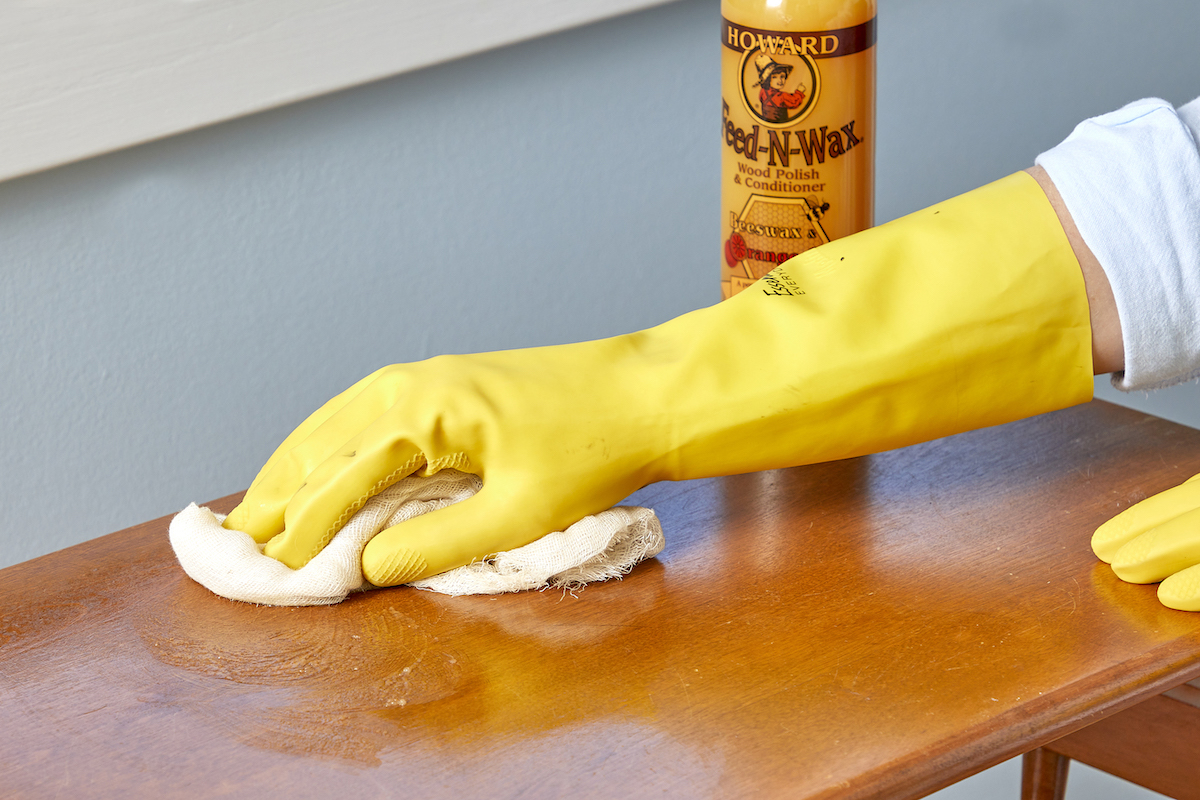
If on the other hand you are satisfied with the results of your cleaning efforts (or you don’t want to refinish), you may wish to protect your furniture from future damage. To do so, reach for a furniture wax product, such as Howard Feed-N-Wax or Daddy Van’s. Apply the wax liberally with a cheesecloth, always being sure to rub in the direction of the wood grain. Afterward, buff with a clean cloth.
Note: Always dust wood furniture with soft, lint-free cloths. Avoid feather dusters, because they aren’t as effective and sometimes have sharp quills that may scratch the wood surface.

